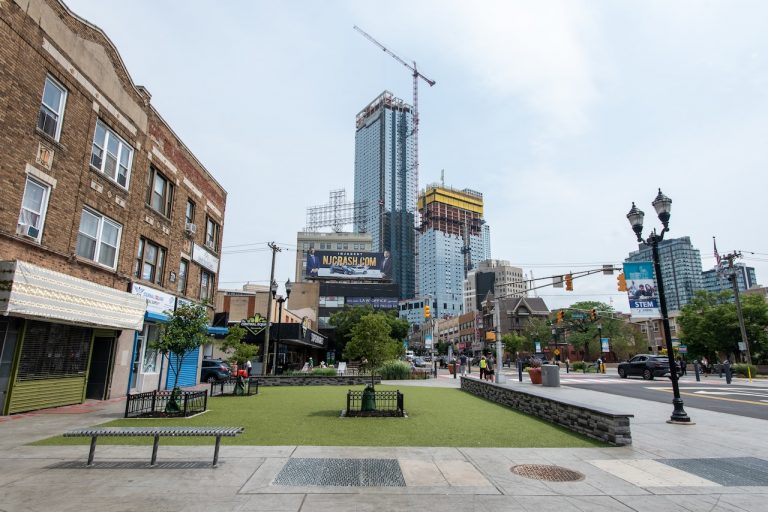Jersey City officials celebrated the addition of new plaza space and other improvements to historic Bergen Square with an official ribbon-cutting Monday, marking the end of a multi-season renovation of the intersection.
The $1.8 million project at the intersection of Bergen Avenue and Academy Street included paving two corner parking lots and creating a plaza with grass and trees, as well as new tables and benches.
The project included raising the entire intersection as well as extensive underground infrastructure work.
“This is a really unique urban space in that it’s part of people’s everyday lives,” said Barkha Patel, the city’s infrastructure director. “This isn’t some remote park in another part of the city that you have to drive to or that’s hard to access, it’s already part of people’s everyday lives, but because it was so underused, no one really knew how special it was.”
The intersection is home to public schools, grocery stores, apartments, shops, and one of the most popular bus stops between Journal Square and McGinley Square.
Although the project only created a small amount of green space, local children quickly became enthusiastic about it and brought along soccer balls.
“There’s more activity here every day,” Mayor Steven Fulop said. “It’s paying off and we’re very proud of it.”
The 10,000-pound oak tree, celebrated at its installation as the centerpiece of the project, wasn’t mentioned or displayed at Monday’s ribbon-cutting ceremony. Many of its leaves have turned brown, and the city said last week it was doing all it could to save it.
The new red and gray pattern on the pavement is a traditional Lenape ribbonwork design, Patel said.
Bergen Square was established in 1660 when Dutch settlers built it as a town square, and this September the community will host its fifth annual Bergen Square Days Festival.
Festival organizer James Diebler noted that the site was a crossing point for the Lenape people between what are now called the Hackensack and Hudson rivers.
“All those who came before us recognised the value of human interaction and exchange. History is only important insofar as it informs the present and points the way to the future. And at a time when high rises and technology threaten to isolate us, as we see every day today, squares like this one, based on the value of human interaction and exchange, are crucial to urban life.”


